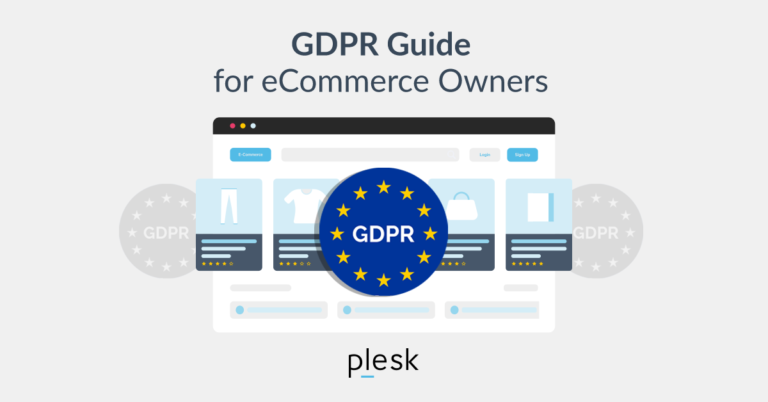Most freelance web designers dread unhappy clients. Yet, eventually, most of us will have to face one. Maybe that’s why there are so many posts out there about bad clients.
After all of your hard work and attempts to meet your client’s demands, the last thing you want to hear is that the client isn’t happy with the fruit of your hard work. You may even fear that the client won’t pay you.

Is there anything you can do about an unhappy client?
Yes, as a matter of fact, there are some steps you should take when your client is unhappy. In this post, I share five steps that you can go through to find out whether you can “fix” your relationship with an unhappy client.
Step 1: Review Your Web Design Agreement
Your first step is to look at your contract or work agreement. Review it carefully, paying extra attention to the scope and terms.
Situations like this are one reason why having a contract is a good idea. To learn more about web design contracts, read the post 5 Things to Include in Your Web Design Contracts.
As you read the contract, make sure your completed web design actually meets the original scope (description of work) defined in your work agreement. If it does not, make a careful note of where the variations are.
Next, compare the reasons why the client is dissatisfied with the actual scope. Are they asking for new features? Again, make a note of any differences.
Finally, review the terms of the agreement. Did you meet the stated deadlines? Did you deliver the work in the manner specified?
As you review the agreement, also look at any phrases that the client might have misunderstood. Make a note of these too.
After you’ve completed a careful review of your work agreement, you’re ready to move on to Step 2.
Step 2: Admit Any Mistakes
If you did notice some areas of the scope that you did not fulfill, part of the problem may be yours. Don’t beat yourself up if this happens. Instead, stay calm. Everyone makes mistakes once in a while.
If the mistake was yours, admit it to yourself and to the client as soon as possible. Offer to fix the problem and do it quickly. If you’re gracious about it, most clients will understand.
However, if you’re sure that you didn’t make a mistake with the project, then you need to move on to Step 3.
Step 3: Point Out Changes
It’s not unusual for some clients to change their mind about what they want during the course of a web design project. The client may not even tell you that they’ve changed their mind until after you’ve turned the project in.
Sometimes the changes a client wants are minor and easy to implement. Other times they take a significant amount of time and effort. While you may be willing to make minor changes to a project, you should charge extra for large scope changes.
Now is the time to pull out your original agreement with the client and your notes. Point out what you both originally agreed to and mention the difference you discovered.
Here are some tips to help you approach the client about scope changes:
- Stay calm. Don’t approach the client in an angry or upset fashion. Refrain from name-calling and accusations. If you are upset, don’t contact the client until you can do so in a professional way.
- Listen carefully. Make sure that you have a clear idea of what the client actually wants and needs. You don’t want to make changes that aren’t really needed or wanted and you don’t want to misunderstand the client.
- Don’t assume the worst. The client isn’t necessarily trying to rip you off. The problem may simply be that the client doesn’t realize how much extra work it will take to make the requested changes.
Once you’ve discussed the changes with the client and you’re sure that you understand them, you’re ready to discuss the cost of those changes
Step 4: Ask for Additional Money
The client should expect to pay additional money for a large scope change to a project. I usually insert phrases in my work agreements like, “additional work will be billed at $xx.00 per hour” and “this quote only includes one round of minor revisions.“
Even without those phrases, you should still ask for more money. As long as your contract had a detailed description of scope of work and the client is clearly asking for things that are not included in that scope, you should be in a good position to negotiate for more money.
After you and the client agree on the cost of the changes, you should redo the contract or create a new one. Treat very large scope changes like a new project. Create a new contract listing the new scope and terms and get the client to sign off on it.
Step 5: Some People Can’t Be Pleased
If you’re sure you didn’t make any mistakes and if you’ve handled the matter as professionally as possible, things should go smoothly. Your relationship with the client is probably “fixed.“
However, there are always a few clients who won’t negotiate. Here are some possible reasons why:
- They could be accustomed to dealing with salaried employees. They don’t understand how important your time is or why you have to protect it.
- They could be embarrassed and not want to admit that they’re wrong. Some people have to always be right, even when they’re wrong. Such people are always hard to do business with.
- The may have misunderstood the original contract. In my profession, I’ve even dealt with a few clients who didn’t bother to read the contract before they signed it.
- They might really be trying to take advantage of you. They’re in the minority, but such people do exist and sometimes they hire freelance web designers.
Whatever the case, know that you’re not the problem. They are. Some clients can’t be pleased no matter what you do.
It may be time to cut your losses and fire the client.
State firmly exactly what additional work, if any, you’ll do for them. If you haven’t been paid, emphasize that you expect to be paid according to your original agreement. Repeat this as often as necessary until you get paid. Then, refuse any future projects from that client. In the long run, you’ll be better off.
Avoiding Unhappy Clients
One of the most effective ways to avoid these types of situations is to be more selective about the clients you work with. Please read How to Evaluate Prospective Clients and Choose the Best Ones.





